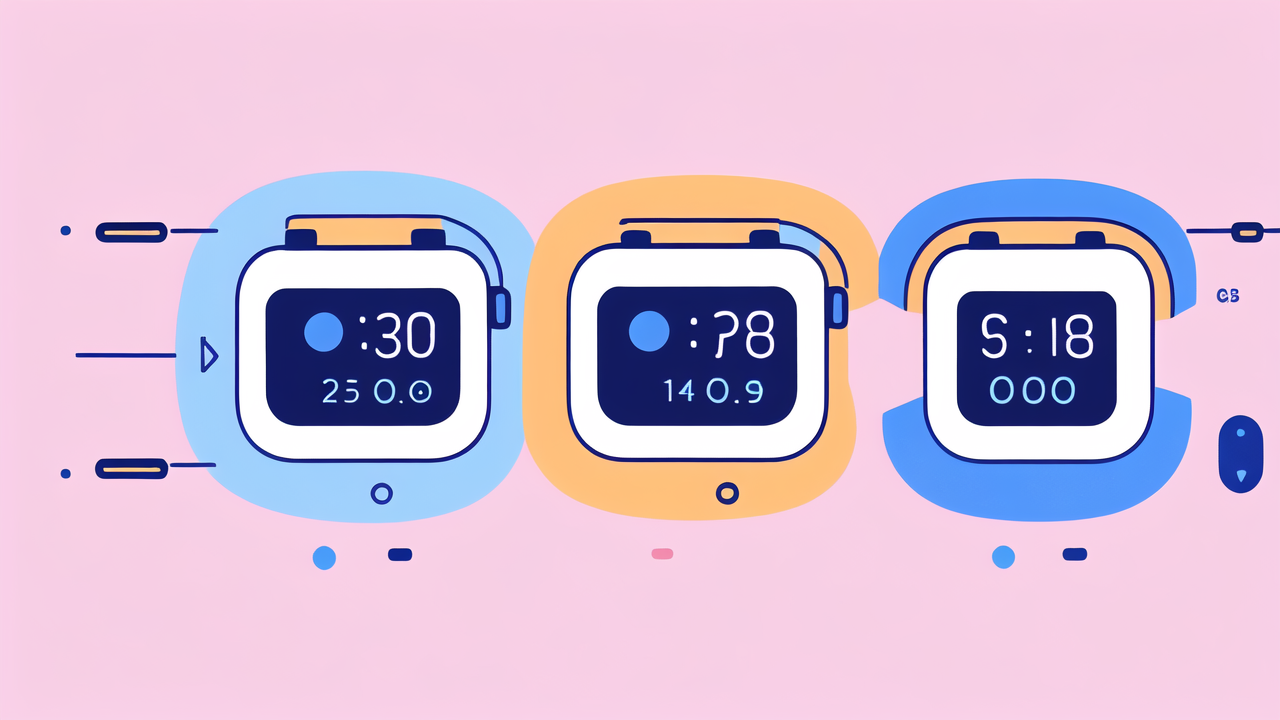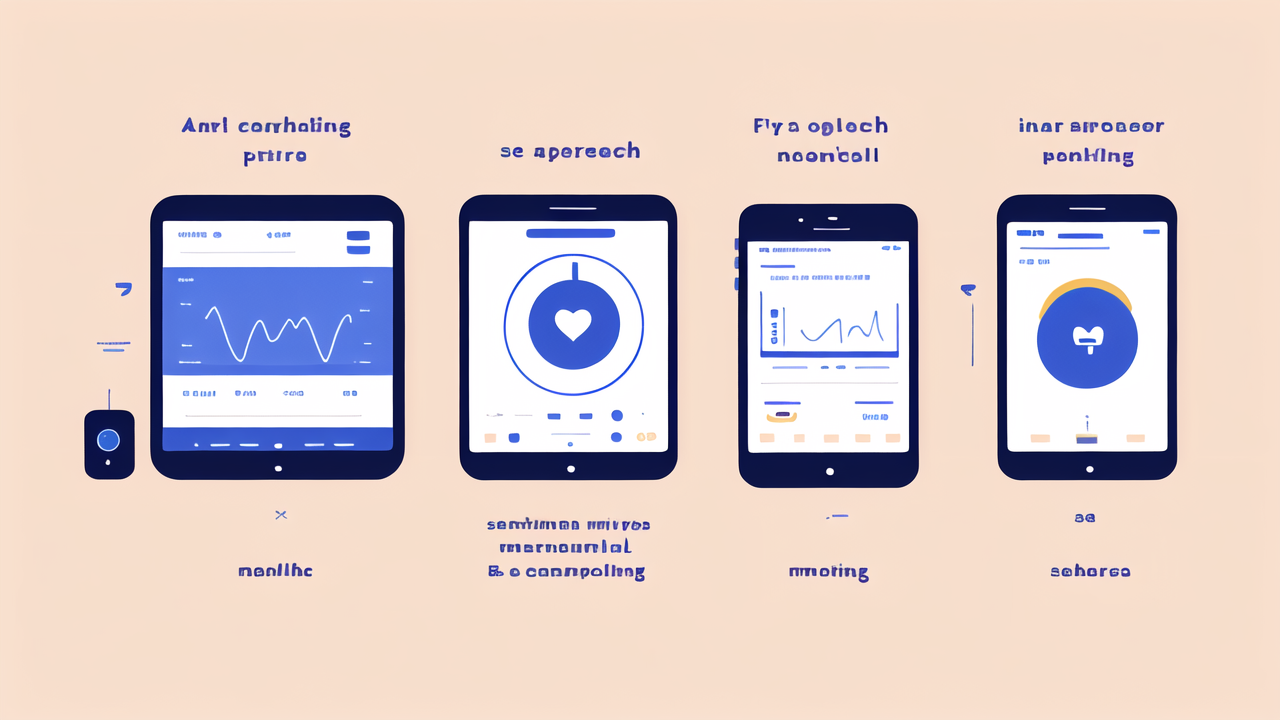Understanding the Advanced Features of Fila's Smartwatch
The Evolution of Health Tracking Technology
Health tracking has come a long way in recent years. It started with simple pedometers that counted steps. Now, we have advanced smartwatches like Fila's. These devices can measure heart rate, sleep patterns, and more.

The journey began with basic fitness trackers. They could only count steps and estimate calories burned. As technology improved, so did the trackers. They added heart rate monitors and GPS. This allowed for more accurate data collection.
Today's smartwatches are like mini-computers on your wrist. They can track multiple health metrics at once. This includes blood oxygen levels, stress levels, and even ECG readings. The evolution of health tracking tech has made personal health management easier and more accessible.
How Fila's Smartwatch Measures Body Metrics
Fila's smartwatch uses a variety of sensors to measure body metrics. These sensors work together to give a complete picture of your health. The optical heart rate sensor uses light to detect blood flow in your wrist. This gives an accurate reading of your heart rate.
The accelerometer tracks your movement and activity levels. It can tell when you're walking, running, or sleeping. The GPS sensor maps your outdoor activities, giving you accurate distance and pace data.
For more advanced metrics, Fila's smartwatch uses bioelectrical impedance analysis (BIA). This sends a tiny electrical current through your body. It measures the resistance to estimate body composition, including body fat percentage and muscle mass.
Accuracy and Reliability of Fila's Measurements
The accuracy of Fila's smartwatch measurements is impressive. However, it's important to understand its limitations. For basic metrics like step count and heart rate, the accuracy is high. These measurements are comparable to medical-grade devices in many cases.
More complex measurements, like body fat percentage, are estimates. They're based on algorithms and general population data. While useful for tracking trends, they may not be as precise as professional medical equipment.
Fila ensures reliability through regular software updates. These improve the accuracy of measurements over time. It's also important for users to wear the watch correctly and input accurate personal data. This helps the device give the most reliable readings possible.
The Impact of Health Tracking on Sports Performance
Enhancing Training Regimes with Body Metrics
Body metrics from smartwatches like Fila's are changing how athletes train. These devices provide real-time data that can inform training decisions. For example, heart rate data can help athletes stay in the right training zone.

Coaches can use this data to tailor workouts to each athlete's needs. They can see how an athlete's body responds to different types of training. This allows for more personalized and effective training plans.
Recovery metrics are also valuable. Sleep tracking and stress level monitoring help prevent overtraining. Athletes can adjust their rest periods based on this data. This leads to better performance and reduced risk of injury.
Fila's Smartwatch in Professional Sports: Case Studies
Several professional sports teams have adopted Fila's smartwatch technology. One soccer team used the watches to monitor player fatigue during a long season. They found that players who maintained optimal sleep patterns had fewer injuries.
A professional cycling team used the smartwatches to fine-tune their race strategy. By analyzing heart rate data from training rides, they could predict each rider's peak performance times. This helped them plan their race tactics more effectively.
In individual sports, a tennis player used Fila's smartwatch to improve her serve. The motion sensors helped her refine her technique. She saw a 10% increase in serve speed over a six-month period.
The Role of Wearables in Injury Prevention and Recovery
Wearables like Fila's smartwatch play a crucial role in injury prevention. They can detect early signs of overtraining or fatigue. This allows coaches and athletes to adjust training loads before injuries occur.
During recovery, these devices provide valuable data. They can track progress and ensure athletes don't return to full activity too soon. For example, heart rate variability can indicate when an athlete's body has fully recovered from intense training.
Some sports teams use Fila's smartwatches to monitor athletes' sleep quality. Poor sleep can increase injury risk. By addressing sleep issues, teams have reduced injury rates among their players.
Future Trends in Health and Wellness Tracking
Innovations in Health Tracking Technologies
The future of health tracking is exciting. We're likely to see even more advanced sensors in smartwatches. These could include non-invasive blood glucose monitoring for diabetics. Sweat analysis for hydration and electrolyte balance is another possibility.

Smartwatches may soon be able to detect early signs of diseases. For example, irregular heart rhythms could indicate potential heart problems. Early detection could lead to faster treatment and better outcomes.
We might also see more integration with other devices. Smartwatches could communicate with smart home systems. This could adjust lighting or temperature based on your sleep patterns or stress levels.
The Integration of AI and Machine Learning in Wearables
AI and machine learning are set to revolutionize health tracking. These technologies can analyze vast amounts of data to provide personalized insights. For example, AI could predict when you're most likely to experience stress. It could then suggest relaxation techniques at the right time.
Machine learning algorithms could detect patterns in your health data. This could lead to early warning signs for various health conditions. The more data these systems collect, the more accurate their predictions will become.
AI could also make health recommendations more personalized. It could suggest workout plans or diet changes based on your unique health profile. This level of personalization could make health tracking even more effective.
Regulatory and Ethical Considerations in Health Data Collection
As health tracking becomes more advanced, regulatory and ethical issues arise. Privacy is a major concern. Companies must ensure that sensitive health data is kept secure and private. There are also questions about who owns this data and how it can be used.
Regulatory bodies are working to keep up with these new technologies. They need to balance innovation with consumer protection. This includes ensuring that health claims made by smartwatch companies are accurate and scientifically backed.
There are also ethical considerations around the use of health data. Could insurance companies use this data to set rates? How might employers use health tracking data? These questions will need careful consideration as the technology evolves.




Leave a comment
This site is protected by hCaptcha and the hCaptcha Privacy Policy and Terms of Service apply.